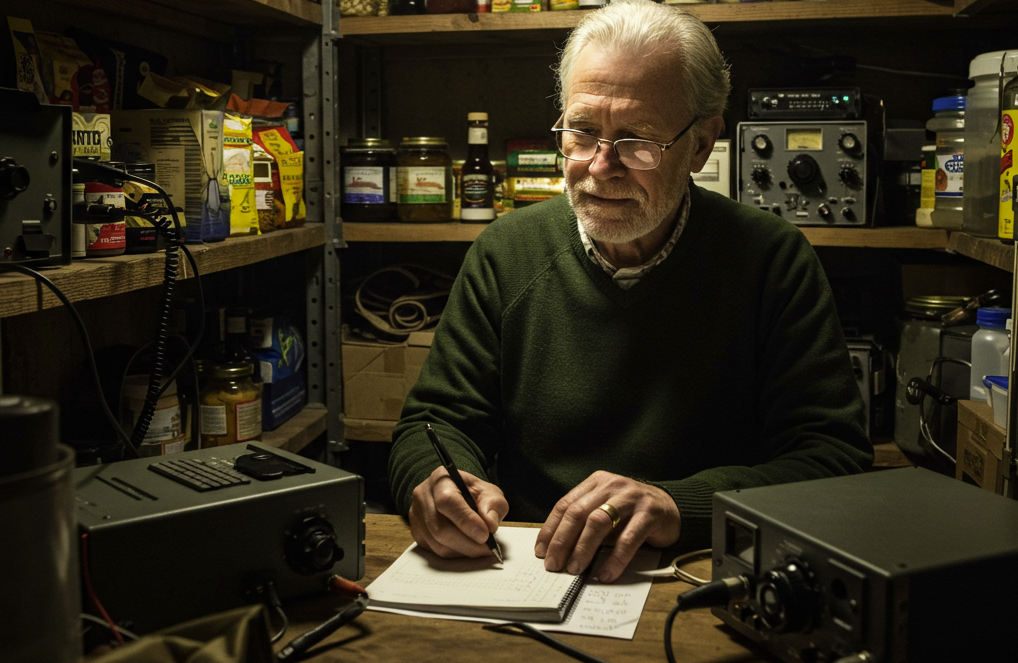Getting in touch with others after a large scale crisis is impossible through normal channels. The internet is down, the power grid doesn’t work, and everyone is afraid. It does not matter if we talk about an earthquake, large scale EMP attack, or a hurricane.
Are your friends safe?
Is your family safe?
These are the natural questions to have!
Communication when the SHTF is a vital part of being a prepper. You have to know how to get in touch with those you care about and how to learn news about what is going on in your area.
Our ancestors used smoke signals to spread the news. We now use the internet and social media. Unfortunately, taking away the internet, social media, and cell phones is just like taking away our ancestors’ smoke signals.
What do you do?
Preppers know the answer: HAM radios. But having a random ham radio is not enough. You need to have a good, reliable one, know how to use it, and what frequencies to check to get in touch with others or get news. Some also need to learn how to use the radios.
We will talk about all these important things below but first, let’s talk about the basics real quick for those who do not know much about ham radios.
What Is Ham Radio?
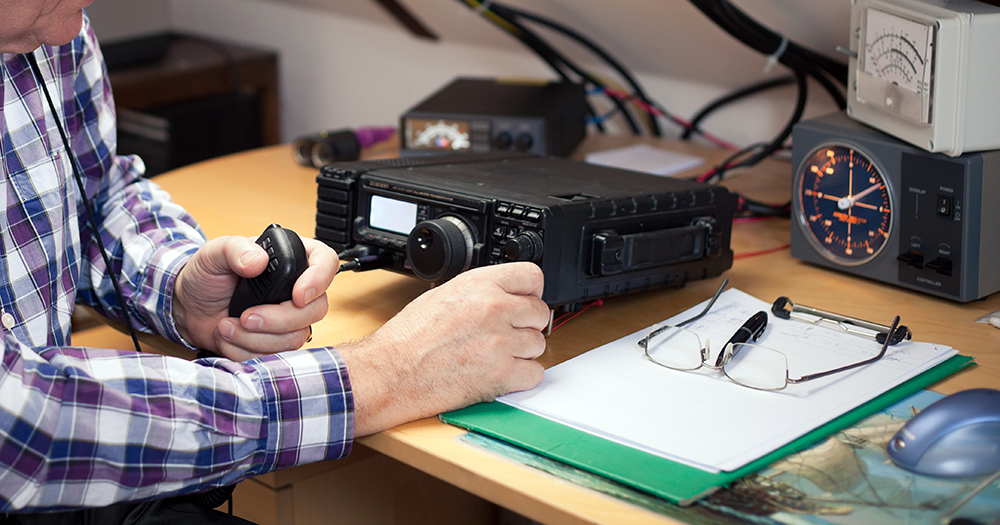 If we were to define it, a ham radio (also known as amateur radio) is a two-way radio service where licensed operators throughout the world experiment and communicate with each other on special frequencies reserved for license holders.
If we were to define it, a ham radio (also known as amateur radio) is a two-way radio service where licensed operators throughout the world experiment and communicate with each other on special frequencies reserved for license holders.
To make it even simpler, it is when you use ham radios to communicate at a smaller scale.
While you are not allowed to use the frequencies legally owned by others, during a disaster, nobody really cares. The most important thing is your ability to communicate. Are you injured and you need help? Nobody will care that you use someone’s frequency. And there are some frequencies where preppers often discuss things, without any disaster happening.
Frequencies are like invisible lanes in the air that carry signals, like sound, data, or messages, through radio waves. Each “lane” (frequency) has a number measured in hertz (Hz), which tells how fast the wave vibrates.
HAM radios use a wide range of these frequencies to send and receive voice or data messages, often when regular communication like phones or internet isn’t available. These frequencies are set aside specifically for amateur radio use and are regulated by governments.
A description of the frequencies HAM radios use:
- LF (Low Frequency): Good for experimental long-range communication, like over ground or water (30-300 kHz).
- MF (Medium Frequency): Allows regional communication (300 kHz – 3 MHz).
- HF (High Frequency): Best for long-distance communication (3–30 MHz).
- VHF (Very High Frequency): Great for local communication, like handheld radios (30–300 MHz).
- UHF (Ultra High Frequency): Ideal for short-range, urban communication (300 MHz–3 GHz).
To keep it simple, the higher the frequency, the shorter the range and the less obstacles (like buildings) affect the transmission. VHF/UHF channels are great for line-of-sight, battery-powered communication, like when roads are compromised. HF channels and international channels can offer a coordination covering hundreds of miles.
What do you need to communicate in a crisis through these frequencies?
- HAM radio – A VHF/UHF band radio is perfect for local coms. A HF (high frequency) radio is perfect for worldwide communications.
- Power Supply – Based on the Ham radio you use, you will need either a regular power supply (can come from a generator) or batteries.
- Antennas – Every radio needs an antenna. Choosing one is very complex but the good news is that when you buy a Ham radio setup, you usually also get the right antenna.
Main HAM Radio Frequencies Preppers Should Know
We will share a list of the most commonly used HAM radio frequencies favored by survivalists and preppers in the U.S. If you would like to share others with readers, please feel free to do this in the comments section.
VHF Frequencies:
- 420 MHz FM – A popular prepper frequency on the 2 meter band for local group coordination.
- 520 MHz FM – National 2 meter simplex calling frequency; ideal for finding other operators and checking propagation. Used for initial communication to then move to a less-busy frequency.
- 550 MHz FM – Used by survivalist groups for supplemental local communications on 2 meters.
UHF Frequencies:
- 030 MHz FM – UHF prepper net frequency (“HAM U3”) for urban/line-of-sight comms in built-up areas.
- 000 MHz FM – National 70 cm calling frequency for initial contact before moving to a working channel.
HF SSB (Single SideBand) Frequencies:
- 305 MHz USB (10 m) – SSB survivalist “HAM10M” channel for daylight DX and local NVIS in good conditions.
- 242 MHz USB (20 m) – Used by TAPRN (The American Prepper Radio Network) and other prepper nets for long-distance daytime contacts.
- 242 MHz LSB (40 m) – TAPRN nighttime regional net frequency on 40 meters; great for up to ~300 miles after dark.
- 357 MHz USB (60 m) – One of the five authorized 60 meter channels in the U.S.; chosen for reliable NVIS communication up to ~500 miles.
- 818 MHz LSB (80 m) – TAPRN net channel on the 80 meter band for nocturnal regional coverage and near-groundwave comms.
Other Noteworthy Frequencies:
- 0650 MHz – Official Emergency Channel known as Channel 9. Even if lately there have been problems with too many people using it, the channel is still monitored by law enforcement. Can also check 27.185 MHz (Channel 19, especially active close to highways).
- 400-162.550 MHz – NOAA / National Weather Service broadcast frequency.
- 500 MHz – Aviation Emergency & Distress / Air Search and Rescue
- 100 MHz – Aviation Search and Rescue
- 160 MHz – Land Search and Rescue
How To Choose A Prepper Ham Radio
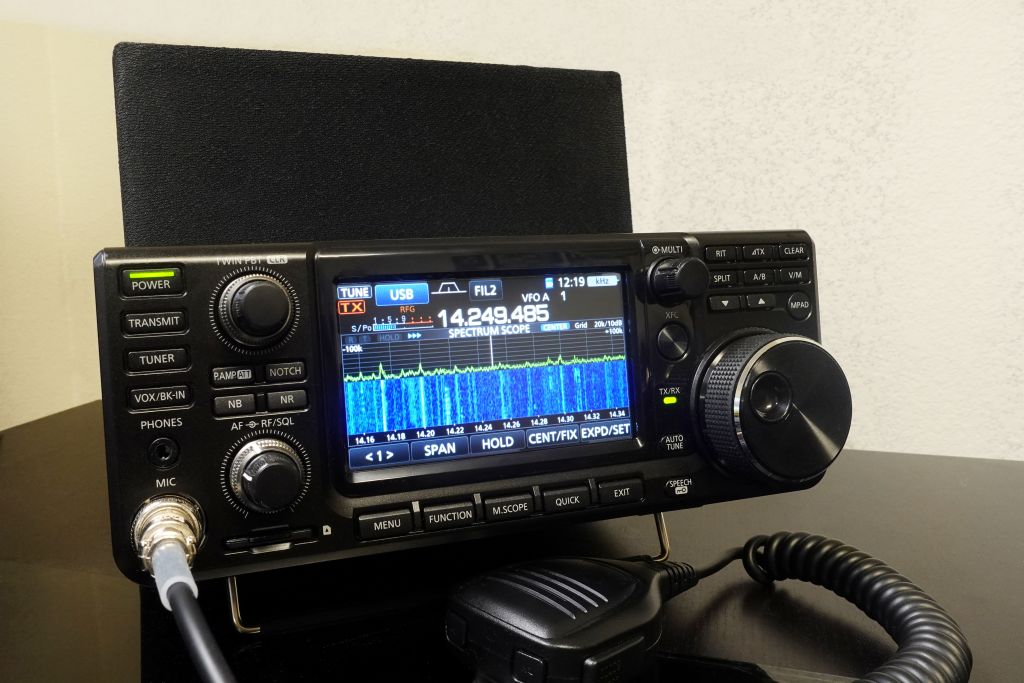 In this article, we do not talk about the hobby, we will focus on exactly what you need as a prepper. We talk about using HAM radios as a communication method after a disaster. This means we cannot just buy the first unit we find.
In this article, we do not talk about the hobby, we will focus on exactly what you need as a prepper. We talk about using HAM radios as a communication method after a disaster. This means we cannot just buy the first unit we find.
The best Ham Radios for preppers need to be:
- Portable – The walkie-talkie is the best example of a highly-portable two-way radio. You need the Ham radio to be portable and smaller in size so you can use it in any possible scenario.
- User-Friendly – You do not need complex features, just the basics.
- Rugged – You might have to use the HAM radio in an austere environment, like during disaster relief. Obviously, you do not want it to break if you drop it by mistake.
- Capable of receiving Emergency Alerts – NOAA weather radio offers accurate information that can help you prepare for an upcoming meteorological emergency. Also, along the ability to receive NOAA weather, the HAM radio needs to also receive alert from the EAS (Emergency Alert System).
- Capable of accessing aviation, marine, and first responder frequencies – Your HAM radio should be able (with minor tweaks) to send analog signals to marine, aviation, and first responder frequencies. All radios can receive them but you are not legally allowed to use these frequencies to send signals, unless your life is in danger.
- Two-Way – As a prepper, only a two-way HAM radio should be considered. CB radio, GMRS, FRS, MURS, and even marine VHF radio all offer two-way communication. But, the transmission range is limited. So, always choose HAM radio.
- Able to transmit at a radius of several miles – In survival and tactical situations, the useful frequencies are those that propagate through line of sight. Basically, the two antennas of the radios have to see each other. In normal scenarios, non-licensed radio is limited to a radius of up to two miles. But, with a good HAM walkie-talkie, the simples of available HAM radios, two people can communicate even at a distance of 5 miles.
Recommended HAM Radios To Buy
The best HAM radio for you is the one that perfectly fits your needs. We cannot guarantee that these are the ones but they are definitely top choices for their intended uses:
Best Overall HAM Radio – Baofeng UV-5R
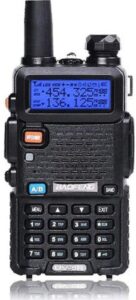 The Baofeng UV-5R offers huge value for the price tag, just $16.47. It is arguably the most popular budget-friendly dual-band handheld radio among preppers. It gives you reliable, versatile communication capability on both VHF (136-174 MHz) and UHF (400-480 MHz) amateur bands in a single compact unit. Its small size, long battery life, and programmable memory channels make it ideal for building a discreet, mobile emergency communications kit, and its low price point means you can equip multiple family members without breaking the bank.
The Baofeng UV-5R offers huge value for the price tag, just $16.47. It is arguably the most popular budget-friendly dual-band handheld radio among preppers. It gives you reliable, versatile communication capability on both VHF (136-174 MHz) and UHF (400-480 MHz) amateur bands in a single compact unit. Its small size, long battery life, and programmable memory channels make it ideal for building a discreet, mobile emergency communications kit, and its low price point means you can equip multiple family members without breaking the bank.
Key Advantages for Preppers
- Dual-Band Flexibility
- Long Battery Life & Swappable Packs
- Extensive Programmability
- Compact, Rugged Design
- Many available accessories
- Budget-Friendly & Multiples-Friendly
Taken together, these features make the Baofeng UV-5R an ideal choice for preppers looking to establish dependable, long-range and local communication networks, without the high price tag of commercial-grade gear.
Best Beginner HAM Radio – Retevis RT95 Mobile HAM Radio
 The Retevis RT95 is a compact, dual-band mobile HAM radio that offers a robust set of features ideal for preppers and survivalists seeking reliable communication in both urban and remote settings. With its VHF (144-148 MHz) and UHF (430-440 MHz) capabilities, this transceiver ensures versatile connectivity across various scenarios.
The Retevis RT95 is a compact, dual-band mobile HAM radio that offers a robust set of features ideal for preppers and survivalists seeking reliable communication in both urban and remote settings. With its VHF (144-148 MHz) and UHF (430-440 MHz) capabilities, this transceiver ensures versatile connectivity across various scenarios.
Key Advantages for Preppers:
- Dual-Band Flexibility
- Adjustable Power Output
- Compact and Durable Design
- User-Friendly Interface
- Enhanced Audio Clarity
- Comprehensive Programming Options
- Extensive Channel Capacity
- Advanced Features
For preppers aiming to establish a reliable communication network, the Retevis RT95 offers a balance of functionality, durability, and affordability, making it a valuable addition to any emergency preparedness kit.
Best Upgrade HAM Radio – Yaesu Original FT-65
 The Yaesu FT-65R is a compact, rugged, dual-band handheld transceiver that offers a reliable communication solution for preppers and survivalists. Designed for both VHF (144-148 MHz) and UHF (430-450 MHz) frequencies, it ensures versatile connectivity in various environments.
The Yaesu FT-65R is a compact, rugged, dual-band handheld transceiver that offers a reliable communication solution for preppers and survivalists. Designed for both VHF (144-148 MHz) and UHF (430-450 MHz) frequencies, it ensures versatile connectivity in various environments.
Key Advantages for Preppers:
- Dual-Band Flexibility
- Adjustable Power Output
- Rugged and Durable
- Long Battery Life
- Clear Audio Output
- NOAA Weather Alerts
- User-Friendly Interface
- Versatile Scanning Capabilities
- Several Additional Features
The Yaesu FT-65R offers a balance of performance, durability, and essential features to stay connected during emergencies.
Take It One Step Further
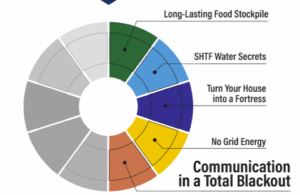 Obviously, we only highlighted the basics above. There is so much more to know about communicating when SHTF and practically during any major crisis. If you want to learn more, you should seriously consider checking out the “Post-SHTF Communication Blueprint” in Joel Lambert’s “A Navy Seal’s Bug-In Guide“.
Obviously, we only highlighted the basics above. There is so much more to know about communicating when SHTF and practically during any major crisis. If you want to learn more, you should seriously consider checking out the “Post-SHTF Communication Blueprint” in Joel Lambert’s “A Navy Seal’s Bug-In Guide“.
It teaches you everything you need to know about communicating in a blackout or after an electromagnetic pulse that takes down our cell towers and satellites. All the tactics you learn are the exact ones SEALs use, including:
- How to operate the best HAM radios for preppers
- How to build a homemade antenna that can greatly amplify any radio signal
- How to listen in without being detected
- The cheapest way to buy emergency radios in America
- How to use a car battery to power up your radios
- And much more
This is just ONE chapter from the bug-in guide. You also get 9 others that specifically tailored for preppers interested in bugging in and surviving whatever life throws at them. For only $37, this book is a steal and every prepper should have it.
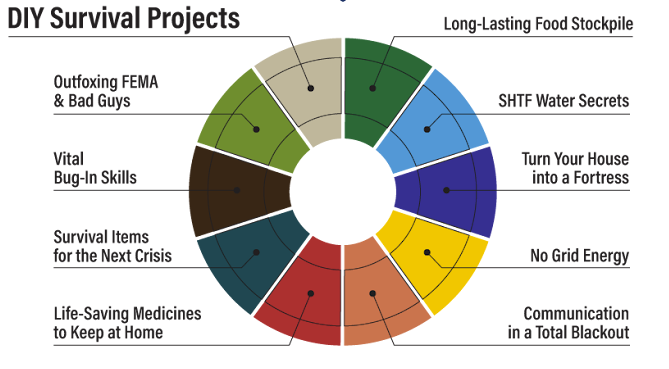
You can learn more about what is included in the guide here!
Final Thoughts
In a true crisis, when cell towers are silent and the internet goes dark, HAM radio becomes more than just a backup. It becomes a lifeline! Knowing the right frequencies, having the right gear, and understanding how to use it can mean the difference between being informed or being in the dark, between reaching loved ones or being completely cut off.
If you’re serious about preparedness, don’t ignore communication. Learn the frequencies. Practice using them. Equip yourself and your group with radios that fit your needs and environment. Because when the SHTF, information is power. And silence can be deadly.
Stay ready. Stay connected. And never underestimate the power of a well-tuned radio!
You May Also Like
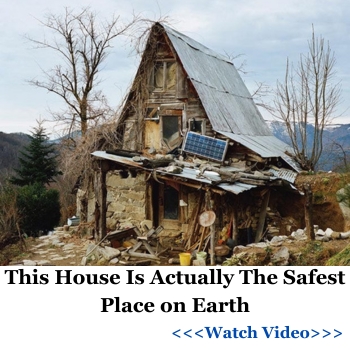 Ham Radio Mistakes You Need to Avoid at All Costs
Ham Radio Mistakes You Need to Avoid at All Costs
Signs Your Neighbor Will Become a Looter as Soon as SHTF (video)
How To Get A Ham Radio License For When SHTF
How To Turn Your CB Car Radio Into A Powerful Transmitter
Quick and Easy Cheat Sheet to Learn How to Operate a Ham Radio
Read the full article here
